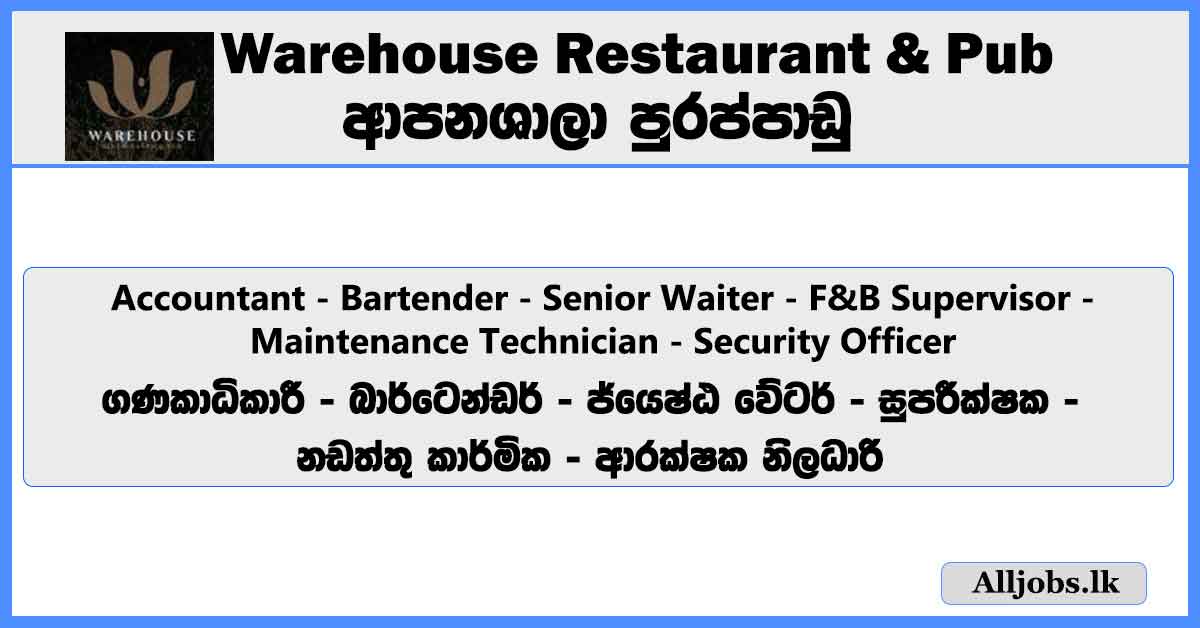What does work-life balance mean to you and how do you achieve it?
Work-life balance is the ability to balance work and personal life.
Achieving work-life balance requires setting boundaries, prioritizing tasks, and being mindful of one’s own needs and wellbeing.
What are some appropriate and inappropriate ways to follow up after an interview
Some ways to achieve work-life balance include:
- Setting clear boundaries between work and personal time, such as turning off work devices outside of working hours.
- Prioritizing tasks by focusing on the most important and urgent ones first.
- Allocating specific time for personal activities and relationships, such as exercise, hobbies, and spending time with family and friends.
- Practicing self-care, such as getting enough sleep, eating healthy, and taking breaks throughout the day.
- Communicating with colleagues and employers about workloads and scheduling needs, and negotiating flexible work arrangements if possible.
Remember, work-life balance is different for everyone and requires ongoing attention and effort to maintain.
How does your employer support work-life balance in the workplace?
These are just a few examples of how employers can support work-life balance in the workplace.
work arrangements:
Employers can provide flexible work hours and remote work options to help employees manage their responsibilities.
Time off policies:
Employers can provide paid time off for vacation, personal days, or sick leave to promote a healthy work-life balance.
Wellness programs:
Employers can offer wellness programs, such as on-site fitness facilities or wellness classes, to promote healthy habits and reduce stress.
Childcare services:
Employers can provide on-site childcare services or offer subsidies for childcare expenses to help working parents manage their family responsibilities.
Employee assistance programs:
Employers can provide employee assistance programs to improve work-life balance.
Supportive culture:
Employers can create a supportive work culture that values work-life balance and encourages employees to prioritize their wellbeing.
It’s important to note that every workplace is different, and the strategies that work best will depend on the needs and values of the organization and its employees.
What are the biggest challenges you face in achieving work-life balance and how do you overcome them?
- Overworking:
One of the biggest challenges to achieving work-life balance is overworking, whether due to high workload or pressure to succeed. To overcome this, it’s important to set clear boundaries between work and personal time and prioritize self-care to avoid burnout.
- Poor time management:
Individuals can prioritize tasks, use time management tools, and communicate scheduling needs to achieve work-life balance.
- Lack of support:
A lack of support from employers, colleagues, or family can make it difficult to achieve work-life balance. Individuals can communicate their needs and seek support through employee assistance programs or support groups.
- Technology overload:
Technology can lead to a lack of work-life balance, so individuals can set limits and track their screen time.
- Personal factors:
Flexible work arrangements, leave policies, and counseling services can help individuals achieve work-life balance.
Individuals can achieve better work-life balance by identifying and overcoming challenges.
What strategies do you use to prioritize your work and personal life?
This are some general strategies that individuals can use to prioritize their work and personal life:
- Make a list: Start by making a list of all the tasks and responsibilities you have, both at work and in your personal life. This will help you get a clear overview of what needs to be done.
- Identify priorities: Next, identify the tasks that are most important or urgent, and prioritize those first. This can help you focus on what’s most critical and avoid feeling overwhelmed.
- Schedule your time: Use a calendar or planner to schedule your time, making sure to allocate specific blocks of time for work tasks, personal activities, and self-care.
- Learn to say no: If you’re feeling overloaded, learn to say no to tasks or commitments that aren’t essential or don’t align with your priorities.
- Set boundaries: Establish clear boundaries between work and personal time, such as turning off work devices outside of working hours, and avoiding personal tasks during work hours.
- Practice self-care: Make time for self-care activities, such as exercise, hobbies, or spending time with loved ones, to help reduce stress and maintain a healthy work-life balance.
- Be flexible: Be open to adjusting your schedule or priorities as needed, depending on changing circumstances or unexpected events
How does technology impact your work-life balance, and what are some tools or apps you use to manage it?
Technology can have both positive and negative effects on work-life balance.
On the one hand, technology can enable remote work and flexible schedules, allowing individuals to work from home or while on the go.
On the other hand, technology can make it difficult to disconnect from work and personal responsibilities, leading to a lack of work-life balance.
To manage the impact of technology on work-life balance, individuals can use a variety of tools and apps. Here are some examples:
-
Productivity apps:
Apps like and Asana can help reduce stress and improve work-life balance.
-
Communication tools:
Communication tools like Slack or Zoom can enable remote collaboration and reduce the need for in-person meetings, which can save time and improve work-life balance.
-
Time tracking apps:
Time tracking apps like RescueTime or Toggl can help individuals monitor their time spent on work and personal tasks, which can help identify areas for improvement and balance.
-
Meditation or mindfulness apps:
Apps like Headspace or Calm can help individuals reduce stress and improve focus, which can contribute to a better work-life balance.
- Device management tools: Device management tools like Moment or Freedom can help individuals set limits on their device use and avoid distractions, which can improve focus and work-life balance.
By using these tools and apps, individuals can manage the impact of technology on their work-life balance and improve their overall well-being.
How do you communicate your work-life balance needs to your employer, colleagues, and family?
By communicating your work-life balance needs clearly and assertively, and by offering solutions and alternatives, you can help ensure that your needs are met and that you can achieve a healthy work-life balance.
- Be clear and specific: When communicating your work-life balance needs, be clear and specific about what you need, whether it’s flexible work hours, time off, or reduced workload.
- Set boundaries: Establish clear boundaries between work and personal time, and communicate them to your colleagues and family members. For example, let your colleagues know that you won’t be available to answer emails outside of work hours.
- Be assertive: Don’t be afraid to assert your needs and priorities, and advocate for yourself if necessary. If you feel that your work-life balance is being compromised, speak up and ask for support or adjustments.
- Provide solutions: When discussing your work-life balance needs, offer solutions or alternatives that can help you achieve a better balance. For example, suggest a flexible schedule that accommodates your personal responsibilities.
- Communicate regularly: Regularly check in with your employer, colleagues, and family members to ensure that your needs are being met and to address any concerns or challenges that arise.
- Be transparent: Be transparent about your work-life balance needs, but also be mindful of others’ needs and priorities. Seek to find a balance that works for everyone involved
What role does exercise and self-care play in achieving work-life balance?
Exercise and self-care play a crucial role in achieving work-life balance. Here are some reasons why:
Reducing stress:
Exercise and self-care activities like meditation or yoga can help reduce stress levels, which can improve overall well-being and enable individuals to better manage their work and personal responsibilities.
Increasing energy and focus:
Regular exercise and self-care practices can help individuals feel more energized and focused, which can improve productivity and enable individuals to better manage their time.
Improving physical health:
Exercise and self-care can improve physical health, reducing the risk of chronic illnesses or injuries that can negatively impact work-life balance.
Promoting mental health:
Self-care practices like meditation or therapy can help individuals manage mental health conditions such as anxiety or depression, which can affect work-life balance.
Enhancing work performance:
Regular exercise and self-care can enhance work performance by improving cognitive function, reducing absenteeism, and increasing job satisfaction.
To achieve work-life balance, individuals should prioritize exercise and self-care as part of their daily routine.
This can include regular physical activity, relaxation techniques, or other self-care practices that promote overall well-being.
By taking care of themselves, individuals can improve their ability to manage work and personal responsibilities and achieve a healthy work-life balance.
How do you maintain work-life balance during busy periods or when facing unexpected events?
Maintaining work-life balance during busy periods or when facing unexpected events can be challenging, but there are strategies that can help. Here are some tips:
-
Prioritize:
When facing a busy period or unexpected event, prioritize your tasks and responsibilities to ensure that the most important ones are completed first. This can help you feel more in control of your workload and reduce stress levels.
-
Communicate:
If you anticipate a busy period or unexpected event, communicate your needs and priorities to your employer, colleagues, and family members. This can help ensure that everyone is aware of your situation and can provide support or assistance if needed.
-
Set boundaries:
Establish clear boundaries between work and personal time, and communicate them to your employer, colleagues, and family members. This can help prevent work from taking over your personal time and reduce stress levels.
-
Take breaks:
It’s important to take regular breaks during busy periods to prevent burnout and maintain productivity. This can include short breaks during the workday, as well as longer breaks to engage in self-care activities or spend time with family and friends.
-
Practice self-care:
During busy periods or unexpected events, it’s important to prioritize self-care activities that promote overall well-being, such as exercise, meditation, or spending time in nature.
-
Be flexible:
Finally, be prepared to be flexible and adapt to changing circumstances. This can help you manage unexpected events more effectively and maintain work-life balance during busy periods.
By prioritizing tasks, communicating needs and priorities, setting boundaries, taking breaks, practicing self-care, and being flexible, individuals can maintain work-life balance during busy periods or when facing unexpected events.
How do you balance work and personal commitments when they conflict with each other?
Balancing work and personal commitments when they conflict with each other can be difficult, but there are strategies that can help. Here are some tips:
- Prioritize: When work and personal commitments conflict, prioritize your commitments based on their importance and urgency. This can help you make decisions about how to allocate your time and resources.
- Communicate: If you need to make changes to your work or personal commitments, communicate your needs and priorities to your employer, colleagues, and family members. This can help ensure that everyone is aware of your situation and can provide support or assistance if needed.
- Be flexible: Be prepared to be flexible and adapt to changing circumstances. This may mean adjusting your work schedule, rescheduling personal commitments, or finding creative solutions that allow you to balance both work and personal responsibilities
- Delegate: If possible, delegate tasks or responsibilities to others to help reduce your workload and free up time for personal commitments.
- Practice self-care: During times of conflict between work and personal commitments, it’s important to prioritize self-care activities that promote overall well-being, such as exercise, meditation, or spending time in nature.
What advice would you give to someone who is struggling to achieve work-life balance?
If someone is struggling to achieve work-life balance, here are some pieces of advice:
- Prioritize: Identify your top priorities in both your work and personal life, and focus your time and energy on those areas. This can help you avoid getting overwhelmed and reduce stress levels.
- Communicate: Communicate your needs and priorities to your employer, colleagues, and family members. This can help ensure that everyone is aware of your situation and can provide support or assistance if needed.
- Set boundaries: Establish clear boundaries between work and personal time, and communicate them to your employer, colleagues, and family members. This can help prevent work from taking over your personal time and reduce stress levels.
- Take breaks: It’s important to take regular breaks during the workday and prioritize activities that promote self-care and well-being, such as exercise, meditation, or spending time with loved ones.
- Seek support: Don’t be afraid to seek support from a therapist, coach, or mentor who can help you develop strategies for achieving work-life balance.
- Be realistic: Be realistic about what you can accomplish in both your work and personal life, and avoid overcommitting yourself. This can help reduce stress levels and increase feelings of satisfaction and accomplishment.
- Adjust as needed: Finally, be prepared to adjust your approach to achieving work-life balance as needed. It’s normal for circumstances to change over time, and it’s important to be flexible and adapt to new situations.
Exercise Physiologists Skills and Duties Required




